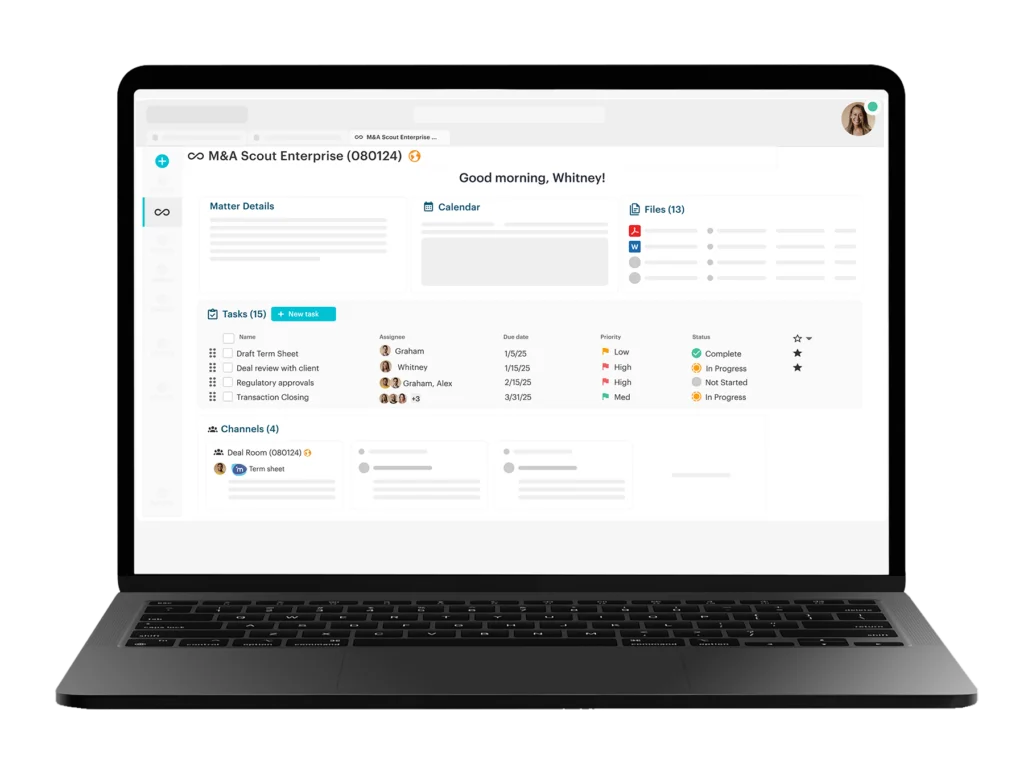It may surprise you that the CEO of Workstorm once resisted adopting collaboration software.
When I sold my former company, Chopper Trading, in January 2015, we were one of the largest trading participants on many asset classes on dozens of exchanges throughout the world. Our technology that drove this success was second to none. If we had one deficit, however, it was our inability to communicate effectively and efficiently.
During a macro event, I’d give orders into speaker phones to communicate to our traders in the dozen offices we had in the United States and Europe. The existing communications technology didn’t have the regulatory footprint that was required. After the sale, I began whiteboarding how communications should work, whether around the office or around the world.
As I put together a group of very senior engineers, many of whom I’d worked with before, much of the team used various collaboration technologies. From spring 2015 to October 2016, when we rolled out our alpha, I either met people in person, called them, emailed them or texted them. I didn’t use the various products some of our teams were using, even though I was whiteboarding various flows on how everything should work together for five hours a day. Once Workstorm rolled out, I used it for 10 hours a day and never looked back.
Why didn’t I adopt the other products that were being used? My method of management worked fine. It wasn’t broken, even though what I was building was a better way to communicate. I’m sure professionals in other industries feel the same.
At this point, I am confident that I save five to 10 hours a week using Workstorm for communication and collaboration. There is no way I would ever work anywhere without Workstorm. I look at it like stopping the use of email 10 years ago and mailing letters instead.
Is your organization resistant to collaboration tools? If so, you may want to reconsider based on recent remote work statistics.
Why Your Hybrid Workforce Needs a Collaboration Tool
As COVID-19 vaccinations increase worldwide, employees and employers are waging a tug of war over time required in the office. According to PwC’s U.S. Remote Work Survey, 55% of employees would like to spend at least three days per week working remotely, but 68% of executives believe that three days per week on-site is key to maintaining company culture.
Even among employees, perspectives on remote work differ. The 2021 Work Trend Index revealed that over 70% of employees want remote work to remain an option, while over 65% want to spend more time with their teams in person.
Does your organization have a hybrid model? If so, a collaboration platform could make it much more efficient to communicate and collaborate with team members working in different locations and even different time zones worldwide.
The Biggest Roadblock to Adopting New Tech
The number one reason professionals resist new tech is because they think their current method works fine. Why learn something new, only to get the same results? You may know executives with this attitude, especially if they succeeded throughout the pandemic.
If you’re trying to get your organization to use collaboration software, you must explain to executives what they’re missing – and the dangers posed to the business. Here’s a great example: the late ’90s email/memo debate. Some organizations decided memos worked “just fine”… and we know how that worked out for them.
Imagine if someone had painted a picture of what those companies could have achieved had they embraced email early. Executives would have jumped to implement email.
For senior professionals, a collaboration tool license is a very affordable expense. Once they realize how much time – and mental energy – they’ll save with a collaboration tool, they’ll want to adopt it. Over a year, it could be the difference between closing 15 mega-deals instead of 10. As I know all too well, you never realize how much time you can save until you try it.
Workstorm Makes Onboarding Fast and Easy
If your organization decides to use a collaboration tool, purchasing licenses is just the first step. You must also train your team on it.
To learn Workstorm, a typical professional needs only a 30-minute training session followed by a couple of hours spent exploring the system. Although we consider that pretty efficient, we’ll soon roll out an even more structured process to allow you and your team to:
- Avoid distractions while learning. Discover essential features through videos and pop-up text.
- Get your questions answered live. Chat with our support team around the clock, without leaving Workstorm.
- Find quick tips for different features. Bookmark our expanded support library to access tutorials on core tools.
Put the Time Into Finding What Best Works for Your Business
Although your business may resist collaboration software, your competitors may be embracing it. Make sure you are at least aware of these products and how they can help your business.
Change is hard – and I understand that as does everyone else – but in the case of adopting collaboration software, it’s worth it. To see how Workstorm could boost your hybrid team’s productivity more than you thought possible, start a free trial or contact our sales team today.



